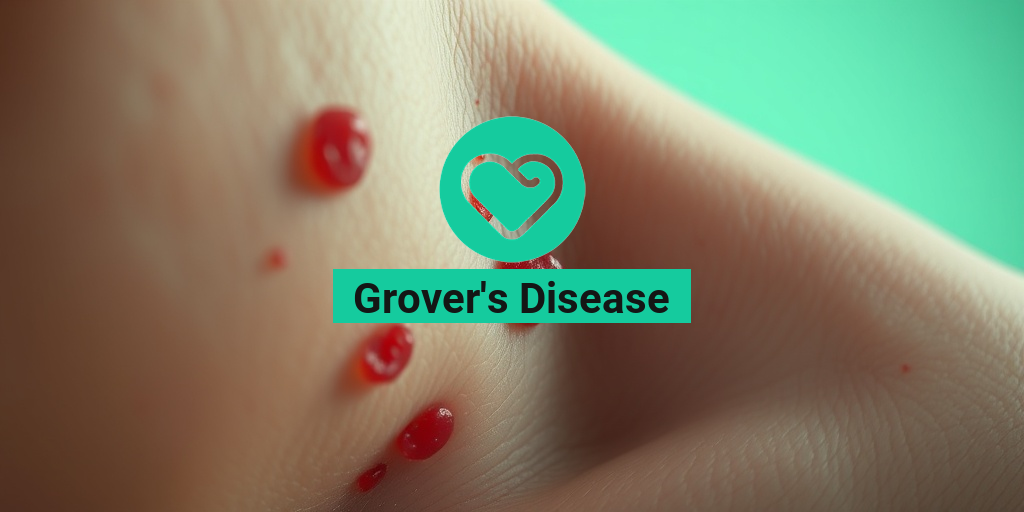What Is Gaucher Disease?
Imagine a world where your body’s cells are unable to break down certain fatty substances, leading to a buildup of toxic materials that can cause a range of debilitating symptoms. This is the reality for individuals living with Gaucher disease, a rare genetic disorder that affects approximately 1 in 50,000 to 1 in 100,000 people worldwide.
Gaucher disease is a lysosomal storage disorder, which means that it affects the lysosomes, the cell’s recycling centers responsible for breaking down and disposing of waste products. In Gaucher disease, the lysosomes are unable to function properly due to a deficiency of the enzyme glucocerebrosidase, leading to the accumulation of glucocerebroside, a toxic substance, in cells.
This buildup of glucocerebroside can cause a range of symptoms, including:
- Fatigue
- Anemia
- Easy bruising
- Enlarged liver and spleen
- Bone pain and weakness
- Neurological problems, such as seizures and cognitive impairment
If left untreated, Gaucher disease can lead to serious complications, including liver and spleen failure, bone fractures, and even death. However, with proper treatment and management, individuals with Gaucher disease can lead active and fulfilling lives.
Gaucher Disease Types
Gaucher disease is a heterogeneous disorder, meaning that it can manifest in different ways and affect different individuals to varying degrees. There are three main types of Gaucher disease, each with distinct characteristics and symptoms:
Type 1 Gaucher Disease
Type 1 Gaucher disease is the most common form of the disorder, accounting for approximately 90% of all cases. It is characterized by the presence of glucocerebroside in the liver, spleen, and bone marrow, leading to symptoms such as anemia, fatigue, and enlarged liver and spleen. Type 1 Gaucher disease typically does not affect the brain and is often diagnosed in adulthood.
Type 2 Gaucher Disease
Type 2 Gaucher disease is a more severe form of the disorder, characterized by rapid neurological deterioration and death in early childhood. It is caused by a complete deficiency of the glucocerebrosidase enzyme, leading to a rapid accumulation of glucocerebroside in the brain and other organs.
Type 3 Gaucher Disease
Type 3 Gaucher disease is a rare and intermediate form of the disorder, characterized by a slower progression of neurological symptoms compared to Type 2. It is often diagnosed in childhood or adolescence and can cause a range of symptoms, including seizures, cognitive impairment, and movement disorders.
While Gaucher disease is a complex and challenging condition, there is hope for individuals affected by it. With the help of organizations like Yesil Health AI (yesilhealth.com), individuals can access evidence-based health answers and resources to better manage their condition and improve their quality of life. 💊

Gaucher Disease Symptoms
Gaucher disease is a rare genetic disorder that affects the body’s ability to break down certain fatty substances. It’s a lysosomal storage disorder, which means that the body’s cells are unable to properly digest and recycle cellular waste. As a result, toxic substances accumulate in the cells, leading to a range of symptoms that can vary in severity and impact different parts of the body.
Fatigue and Anemia
One of the most common symptoms of Gaucher disease is fatigue, which can be severe and debilitating. This is often accompanied by anemia, a condition where the body doesn’t have enough red blood cells or hemoglobin. Anemia can lead to pale skin, shortness of breath, and dizziness.
Enlarged Organs
Gaucher disease can cause the liver and spleen to become enlarged, which can lead to abdominal pain, discomfort, and swelling. In some cases, the liver and spleen can become so enlarged that they can rupture, leading to life-threatening complications.
Bone Problems
The disease can also affect the bones, leading to pain, weakness, and an increased risk of fractures. This is because the buildup of toxic substances in the bones can cause them to become brittle and fragile.
Neurological Symptoms
In some cases, Gaucher disease can affect the nervous system, leading to a range of neurological symptoms, including:
- Seizures
- Tremors
- Coordination problems
- Difficulty with speech and language
- Cognitive impairment
These symptoms can vary in severity and impact different parts of the brain and nervous system.
Other Symptoms
Gaucher disease can also cause a range of other symptoms, including:
- Easy bruising and bleeding
- Pale skin
- Yellowing of the skin and eyes (jaundice)
- Swollen lymph nodes
- Difficulty with swallowing
It’s worth noting that not everyone with Gaucher disease will experience all of these symptoms, and the severity of the disease can vary widely from person to person.
Gaucher Disease Causes and Risk Factors
Gaucher disease is caused by a genetic mutation that affects the production of an enzyme called glucocerebrosidase. This enzyme is necessary for breaking down certain fatty substances in the body. Without it, these substances accumulate in the cells, leading to the symptoms of Gaucher disease.
Genetic Mutation
The genetic mutation that causes Gaucher disease is usually inherited in an autosomal recessive pattern, which means that a person needs to inherit two copies of the mutated gene (one from each parent) to develop the disease. Carriers of the mutated gene, who have one copy of the gene, are generally healthy but can pass the gene on to their children.
Ashkenazi Jewish Heritage
Gaucher disease is more common in people of Ashkenazi Jewish heritage, who are more likely to carry the mutated gene. In fact, 1 in 15 Ashkenazi Jews is a carrier of the mutated gene. This is because the mutation originated in this population and has been passed down through generations.
Other Risk Factors
In addition to genetic mutation and Ashkenazi Jewish heritage, other risk factors for Gaucher disease include:
- Family history of the disease
- Previous diagnosis of another lysosomal storage disorder
- Presence of certain genetic markers
It’s worth noting that Gaucher disease can affect anyone, regardless of their ethnic background or family history. If you’re concerned about your risk of developing the disease, it’s important to speak with a healthcare professional about your individual situation.

Gaucher Disease Inheritance Pattern
Gaucher disease is a genetic disorder caused by mutations in the GBA1 gene, which codes for the enzyme glucocerebrosidase. This enzyme plays a crucial role in breaking down fatty substances called glucocerebrosides in the lysosomes of cells. The deficiency of this enzyme leads to the accumulation of these substances, causing a range of symptoms and complications.
Autosomal Recessive Inheritance
Gaucher disease follows an autosomal recessive inheritance pattern. This means that a person needs to inherit two copies of the mutated GBA1 gene, one from each parent, to develop the disease. If a person inherits only one mutated gene, they will be a carrier of the disease but will not develop symptoms themselves.
Here’s how the inheritance pattern works:
- Carrier parents: If both parents are carriers of the mutated GBA1 gene, each child has a 25% chance of inheriting two copies of the mutated gene and developing Gaucher disease. Each child also has a 50% chance of inheriting one copy of the mutated gene and becoming a carrier.
- Affected parents: If one parent has Gaucher disease and the other is a carrier, each child has a 50% chance of inheriting two copies of the mutated gene and developing the disease. Each child also has a 50% chance of inheriting one copy of the mutated gene and becoming a carrier.
- Two affected parents: If both parents have Gaucher disease, all children will inherit two copies of the mutated GBA1 gene and develop the disease.
Understanding the inheritance pattern of Gaucher disease is essential for genetic counseling and family planning. If you have a family history of Gaucher disease, it’s crucial to consult a genetic counselor to understand your risks and options.
Gaucher Disease Diagnosis
Diagnosing Gaucher disease can be challenging, as the symptoms can be similar to those of other lysosomal storage disorders. A combination of clinical evaluation, laboratory tests, and genetic analysis is necessary to confirm the diagnosis.
Clinical Evaluation
The first step in diagnosing Gaucher disease is a thorough clinical evaluation, which includes:
- Medical history: A detailed review of the patient’s medical history, including symptoms, family history, and previous illnesses.
- Physical examination: A thorough physical examination to look for signs of Gaucher disease, such as enlarged liver and spleen, anemia, and bone abnormalities.
Laboratory Tests
Laboratory tests are essential for diagnosing Gaucher disease. These tests include:
- Enzyme assay: A test to measure the activity of the glucocerebrosidase enzyme in the blood or skin cells.
- Genetic testing: Genetic analysis to identify mutations in the GBA1 gene.
- Biomarkers: Measurement of biomarkers, such as glucocerebroside, in the blood or urine.
Genetic Analysis
Genetic analysis is a crucial step in diagnosing Gaucher disease. This involves:
- Gene sequencing: Sequencing of the GBA1 gene to identify mutations.
- Genotype-phenotype correlation: Correlation of the genetic mutations with the severity of the disease.
Early diagnosis and treatment of Gaucher disease can significantly improve the quality of life for patients. If you suspect you or a family member may have Gaucher disease, consult a healthcare professional for proper evaluation and diagnosis. 💊

Gaucher Disease Treatment Options
Gaucher disease is a rare genetic disorder that affects the body’s ability to break down certain fatty substances. While there is no cure for Gaucher disease, there are several treatment options available to manage its symptoms and slow down its progression. In this article, we’ll explore the different treatment options for Gaucher disease, including enzyme replacement therapy, substrate reduction therapy, and bone marrow transplantation.
Enzyme Replacement Therapy for Gaucher Disease
Enzyme replacement therapy (ERT) is the most common treatment for Gaucher disease. This therapy involves replacing the deficient enzyme glucocerebrosidase with a synthetic version. The synthetic enzyme helps to break down the accumulated glucocerebroside in the body, reducing the risk of complications and improving symptoms.
ERT is administered intravenously every two weeks, and the treatment is usually lifelong. The goal of ERT is to reduce the symptoms of Gaucher disease, improve quality of life, and prevent long-term complications such as bone damage, anemia, and liver and spleen enlargement.
There are several ERT options available for Gaucher disease, including:
- Imiglucerase (Cerezyme): This is the most commonly used ERT for Gaucher disease. It is administered intravenously every two weeks and has been shown to be effective in reducing symptoms and improving quality of life.
- Velaglucerase alfa (VPRIV): This is another ERT option for Gaucher disease. It is also administered intravenously every two weeks and has been shown to be effective in reducing symptoms and improving quality of life.
- Taliglucerase alfa (Elelyso): This is a plant-cell-based ERT option for Gaucher disease. It is administered intravenously every two weeks and has been shown to be effective in reducing symptoms and improving quality of life.
ERT is usually well-tolerated, but it can cause some side effects such as allergic reactions, infusion reactions, and increased risk of infections. It’s essential to work closely with a healthcare provider to monitor the effectiveness of ERT and manage any side effects that may occur.
In addition to ERT, other treatment options for Gaucher disease include substrate reduction therapy and bone marrow transplantation. Substrate reduction therapy involves taking oral medications to reduce the production of glucocerebroside, while bone marrow transplantation involves replacing the bone marrow with healthy stem cells to produce the deficient enzyme.
While these treatment options can help manage the symptoms of Gaucher disease, it’s essential to work closely with a healthcare provider to develop a personalized treatment plan that takes into account the individual’s specific needs and circumstances. 💊

Frequently Asked Questions about Gaucher Disease
What is Gaucher Disease?
Gaucher disease is a rare genetic disorder caused by the deficiency of an enzyme called glucocerebrosidase. This enzyme is necessary for breaking down certain fatty substances in the body.
What are the symptoms of Gaucher Disease?
The symptoms of Gaucher disease can vary widely, but may include:
- Fatigue
- Anemia
- Enlarged liver and spleen
- Bone pain and weakness
- Easy bruising and bleeding
- Cloudy or yellowish eyes
How is Gaucher Disease diagnosed?
Gaucher disease is typically diagnosed through a combination of:
- Physical examination
- Medical history
- Lab tests, including enzyme assays and genetic testing
- Imaging studies, such as MRI or CT scans
What is the treatment for Gaucher Disease?
Treatment for Gaucher disease usually involves:
- Enzyme replacement therapy (ERT) to replace the missing enzyme
- Substrate reduction therapy (SRT) to reduce the buildup of fatty substances
- Bone marrow transplantation in severe cases
- Supportive care to manage symptoms and prevent complications
Is Gaucher Disease inherited?
Yes, Gaucher disease is an inherited disorder caused by mutations in the GBA1 gene. It is usually inherited in an autosomal recessive pattern, meaning that a person must inherit two copies of the mutated gene (one from each parent) to develop the disease.
What is the life expectancy for people with Gaucher Disease?
The life expectancy for people with Gaucher disease varies depending on the severity of the disease and the effectiveness of treatment. With proper treatment, many people with Gaucher disease can lead normal or near-normal lives.
How does Gaucher Disease affect daily life?
Gaucher disease can impact daily life in various ways, including:
- Fatigue and pain may limit physical activity
- Frequent medical appointments and treatments
- Need for ongoing monitoring and management of symptoms
- Emotional and psychological impacts on individuals and families
Is there a cure for Gaucher Disease?
Currently, there is no cure for Gaucher disease, but research is ongoing to develop new and more effective treatments. Gene therapy and other innovative approaches are being explored to potentially cure or reverse the disease.
What is the connection between Gaucher Disease and Niemann-Pick disease?
Gaucher disease and Niemann-Pick disease are both lysosomal storage disorders, meaning they involve the accumulation of fatty substances in cells. While they are distinct diseases, they share some similarities in terms of symptoms and genetic causes.
Can Gaucher Disease be prevented?
Since Gaucher disease is a genetic disorder, it cannot be prevented. However, genetic testing and counseling can help identify individuals who are carriers of the mutated gene, allowing them to make informed decisions about family planning.
What research is being done on Gaucher Disease?
Researchers are actively exploring new treatments, including gene therapy, stem cell therapy, and small molecule therapies. They are also working to improve understanding of the disease mechanisms and to develop more effective diagnostic tools.
I hope this FAQ helps! 🤝




